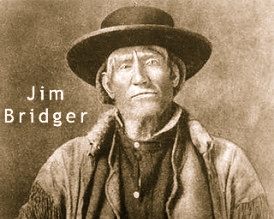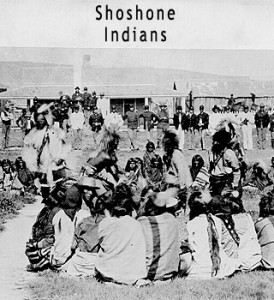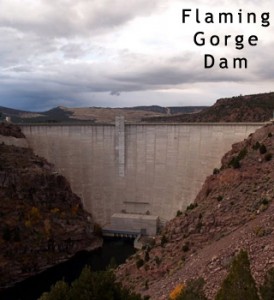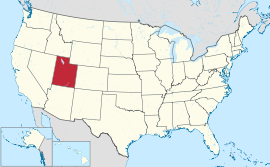Utah

History of the Mormons in Utah & the Salt Lake Temple
In this film, “Mountain of the Lord,” a newspaper reporter from New York City visits with Wilford Woodruff, fourth president of The Church of Jesus Christ of Latter Day Saints after the death of John Taylor, to recount the history of the construction of the Salt Lake Temple in the late 1800’s. In late July of 1847, the first group of Latter-day Saint pioneers entered the Salt Lake Valley. Within a few days, their leader Brigham Young indicated the precise location where the holy edifice should stand by striking the ground with his cane and announcing, “Here we will build a temple to our God.” Apostle Wilford Woodruff marked the spot then and there. Construction of the temple began on February 14, 1853, following a groundbreaking ceremony conducted by Brigham Young.
A granite deposit was found nearby, and workers began to hand-chisel massive granite blocks which weighed between 2,500 and 5,600 pounds. These large stones were transported by ox-drawn wagon (and later railroad) to the temple lot. Most of the labor was performed by volunteers who, despite their hardships in trying to settle a new land, gave freely of their time and skills. Brigham Young encouraged the Saints to make the Salt Lake Temple the best it could be. The prophet stated that he wanted “to see the Temple built in a manner that it will endure through the Millennium” (Journal of Discourses, 10:254). The temple was built accordingly. Brigham Young also worked extensively with architect Truman O. Angell, directing what the temple was to look like according to the visions and revelations given him by the Lord. The architectural style of the temple is often described as Gothic, complementing the doctrinal symbolism and revelatory layout of the Temple.
There were numerous challenges which slowed the construction of the temple. At one point Church leaders learned that a U.S. Army contingent was being sent to Utah. Mormons distrusted the government that had allowed them to be persecuted and pushed out of Illinois, Missouri, Ohio, and New York, so the work on the temple was stopped and the entire foundation was buried. As positive relations developed between the U.S. Government and the Church, work on the temple was resumed. The foundation was uncovered, but workers found that there were cracks in the foundation blocks. They were forced to take them out and start over, using new stones that were cut to fit together without mortar. The Mormons worked tirelessly to build the 253,015 square-foot temple. Once the exterior was completed, skilled artists and craftsmen were brought in to complete the temple’s 170 rooms. The interior furnishings were completed in one year, marking 40 years since the groundbreaking ceremony. The Salt Lake Temple became the largest temple, with 12 sealing rooms and four ordinance rooms (after various additions and remodeling). With over a hundred temples constructed since then, it still remains the largest in the Church. Information from http://www.mormonwiki.com.
Timeline of Utah: 700’s – 1700’s
 (700) Anasazi Indians built pueblos in the area
(700) Anasazi Indians built pueblos in the area- (1600) Shoshone Indians now control the area
- (1776) Silvestre Velez de Escalante and Francesco Atanasio Dominguez explored Utah on way to California
1800’s
- (1821) Mexico won its independence from Spain, and claimed all of Utah
 (1824) Jim Bridger discovered Salt Lake
(1824) Jim Bridger discovered Salt Lake- (1841) Capt. John Bartleson led first wagon train of settlers across Utah to California
- (1843) John C. Fremont and Kit Carson explored the Great Basin
- (1844) Ogden settled
- (1847) Brigham Young and Mormon pioneers arrived in Salt Lake Valley
- (1848) U. S. wins Mexican-American War; Treaty of Guadalupe signed; Utah ceded to the U.S.
- (1849) State of Deseret founded
- (1850) Utah becamea U. S. territory
- (1854) Grasshopper plague damaged crops
- (1861) Telegraph service began
 (1863) Silver and lead discovered in Bingham Canyon
(1863) Silver and lead discovered in Bingham Canyon- (1873) Polygamy outlawed by Congress
- (1890) Mormon church issued far-reaching Manifesto ending polygamy
- (1896) Utah became 45th state
 Utah (/ˈjuːtɔː/ or
Utah (/ˈjuːtɔː/ or ![]() i/ˈjuːtɑː/) (Arapaho: Wo’tééneihí’) is a state in the Western United States. It became the 45th state admitted to the Union on January 4, 1896. Utah is the 13th-most extensive, the 34th-most populous, and the 10th-least-densely populated of the 50 United States. Approximately 80% of Utah’s 2,817,222 people live along the Wasatch Front, centering on Salt Lake City. This leaves vast expanses of the state nearly uninhabited, making the population the sixth most urbanized in the U.S. The name “Utah” is derived from the name of the Ute tribe and means “people of the mountains” in the Ute language. Utah is bordered by Arizona on the south,Colorado on the east, Wyoming on the northeast, Idaho on the north and Nevada on the west. It also touches a corner of New Mexico.
i/ˈjuːtɑː/) (Arapaho: Wo’tééneihí’) is a state in the Western United States. It became the 45th state admitted to the Union on January 4, 1896. Utah is the 13th-most extensive, the 34th-most populous, and the 10th-least-densely populated of the 50 United States. Approximately 80% of Utah’s 2,817,222 people live along the Wasatch Front, centering on Salt Lake City. This leaves vast expanses of the state nearly uninhabited, making the population the sixth most urbanized in the U.S. The name “Utah” is derived from the name of the Ute tribe and means “people of the mountains” in the Ute language. Utah is bordered by Arizona on the south,Colorado on the east, Wyoming on the northeast, Idaho on the north and Nevada on the west. It also touches a corner of New Mexico.
Utah is the most religiously homogeneous state in the Union. It is home to the Salt Lake Temple, and approximately 60% of Utahns are reported to be members of LDS Church which greatly influences Utah culture and daily life.
The state is a center of transportation, information technology and research, government services, mining, and a major tourist destination for outdoor recreation. According to the U.S. Census Bureau‘s population estimates, Utah was the fastest-growing state in the United States as of 2008. St. George, Utah, was the fastest–growing metropolitan area in the United States from 2000 to 2005.
Early history
Thousands of years before the arrival of European explorers, the Anasazi and the Fremont tribes lived in what is now known as Utah. These Native American tribes are subgroups of the Ute-Aztec Native American ethnicity, and were sedentary. The Anasazi built their homes through excavations in mountains, and the Fremont built houses of straw before disappearing from the region around the 15th century. Another group of Native Americans, the Navajo, settled in the region around the 18th century. In the mid-18th century, other Uto-Aztecan tribes, including the Goshute, the Paiute, the Shoshone and the Ute people, also settled in the region. These five groups were present when the first European explorers arrived.
The southern Utah region was explored by the Spanish in 1540, led by Francisco Vásquez de Coronado, while looking for the legendary Cíbola. A group led by two Catholic priests—sometimes called the Dominguez-Escalante Expedition—left Santa Fe in 1776, hoping to find a route to the coast of California. The expedition traveled as far north as Utah Lake and encountered the native residents. The Spanish made further explorations in the region, but were not interested in colonizing the area because of its desert nature. In 1821, the year Mexico achieved its independence from Spain, the region of Utah became part of Mexico, as part of Alta California.
Trappers and fur traders explored some areas of Utah in the early 19th century. The city of Provo, Utah was named for one of those men, Étienne Provost, who visited the area in 1825. The city of Ogden, Utah was named after Peter Skene Ogden, a Canadian explorer who traded furs in the Weber Valley. In late 1824, Jim Bridger became the first white person to sight the Great Salt Lake. Due to the high salinity of its waters, Bridger thought he had found the Pacific Ocean; he subsequently found that this body of water was nothing but a giant salt lake. After the discovery of the lake, hundreds of traders and trappers established trading posts in the region. In the 1830s, thousands of people traveling from the East toward the U.S. West began to make stops in the region of the Great Salt Lake.
Mormon settlement
 Brigham Young led the first Mormon pioneers to the Great Salt Lake.
Brigham Young led the first Mormon pioneers to the Great Salt Lake.
Following the death of Joseph Smith, in Carthage, Illinois, in 1844, the more than 11,000 Latter Day Saints remaining in Nauvoo, Illinois struggled in conflict with neighbors until Brigham Young, the president of The Church of Jesus Christ of Latter-day Saints, emerged as the leader of the largest portion. (See Succession crisis.)
Brigham Young and the first band of Mormon pioneers came to the Salt Lake Valley on July 24, 1847. Over the next 22 years, more than 70,000 pioneers crossed the plains and settled in Utah.
For the first few years Brigham Young and the thousands of early settlers of Salt Lake City struggled to survive. The barren desert land was deemed by the Mormons as desirable as a place they could practice their religion without interference.
Utah was the source of many pioneer settlements located elsewhere in the West. Salt Lake City was the hub of a “far-flung commonwealth” of Mormon settlements. Fed by a continuing supply of church converts coming from the East and around the world, Church leaders often assigned groups of church members to establish settlements throughout the West. Beginning with settlements along Utah’s Wasatch front (Salt Lake City, Bountiful and Weber Valley, and Provo and Utah Valley), irrigation enabled the establishment of fairly large pioneer populations in an area that Jim Bridger had advised Young would be inhospitable for the cultivation of crops because of frost. Throughout the remainder of the 19th century, Mormon pioneers called by Brigham Young would leave Salt Lake City and establish hundreds of other settlements in Utah, Idaho, Nevada, Arizona, Wyoming, California, Canada, and Mexico – including in Las Vegas, Nevada; Franklin, Idaho (the first white settlement in Idaho); San Bernardino, California; Star Valley, Wyoming; and Carson Valley, Nevada.
Prominent settlements in Utah included St. George, Logan, and Manti (where settlers completed the first three temples in Utah, each started after but finished many years before the larger and better known temple built in Salt Lake City was completed in 1893), as well as Parowan, Cedar City, Bluff, Moab, Vernal, Fillmore (which served as the territorial capital between 1850 and 1856), Nephi, Levan, Spanish Fork, Springville, Provo Bench (now Orem), Pleasant Grove, American Fork, Lehi, Sandy, Murray, Jordan, Centerville, Farmington, Huntsville, Kaysville, Grantsville, Tooele, Roy, Brigham City, and many other smaller towns and settlements. Young had an expansionist’s view of the territory that he and the Mormon pioneers were settling, calling it Deseret – which according to the Book of Mormon was supposed to have translated into “honeybee” – hence the beehive which can still be found on the Utah flag, and the state’s motto, “Industry.”
Utah was Mexican territory when the first pioneers arrived in 1847. Early in the Mexican-American War in late 1846, the United States had captured New Mexico and California, and the whole Southwest became U.S. territory upon the signing of the Treaty of Guadalupe Hidalgo, February 2, 1848. The treaty was ratified by the United States Senate on March 11. Learning that California and New Mexico were applying for statehood, the settlers of the area (originally having planned to petition for territorial status) applied for statehood with an ambitious plan for a State of Deseret. The Utah Territory, which was much smaller than the proposed state of Deseret, though more conformitive with the sizes of the territories created before and with it, was created with the Compromise of 1850, and Fillmore, named after Millard Fillmore, the president at the time it was named, was designated the capital. The territory was given the name Utah after the Ute tribe of Native Americans. Salt Lake City replaced Fillmore as the territorial capital in 1856.
Disputes between the Mormon inhabitants and the U.S. government intensified due to prejudice against The Church of Jesus Christ of Latter-day Saints in the Northeast and the practice of plural marriage, or polygamy, among its members. The Mormons were still pushing for the establishment of a State of Deseret with the new borders of the Utah Territory. Most, if not all of the members of the U.S. government opposed the polygamous practices of the Mormons.
 Sketch of Salt Lake City in 1860
Sketch of Salt Lake City in 1860
Members of the LDS Church were viewed as un-American and rebellious when news of their polygamous practices spread. In 1857, particularly heinous accusations of abdication of government and general immorality by former associate justice William W. Drummond, among others, caused the administration of James Buchanan to send a secret military “expedition” to Utah. When the supposed rebellion should be quelled, Alfred Cummingwould take the place of Brigham Young as territorial governor. The resulting conflict is known as the Utah War, nicknamed “Buchanan’s Blunder”.
Before troops led by Albert Sidney Johnston entered the territory, Brigham Young ordered all residents of Salt Lake City to evacuate southward to Utah Valley and sent out a force, known as the Nauvoo Legion, to delay the government’s advance. Although wagons and supplies were burned, eventually the troops arrived in 1858, and Young surrendered official control to Cumming, although most subsequent commentators claim that Young retained true power in the territory. A steady stream of governors appointed by the president quit the position, often citing the traditions of their supposed territorial government. By agreement with Young, Johnston established Camp Floyd, 40 miles (60 km) away from Salt Lake City, to the southwest.
Salt Lake City was the last link of the First Transcontinental Telegraph, completed in October 1861. Brigham Young was among the first to send a message, along with Abraham Lincoln and other officials.
Because of the American Civil War, federal troops were pulled out of Utah Territory in 1861. This was a boon to the local economy as the army sold everything in camp for pennies on the dollar before marching back east to join the war. The territory was then left in LDS hands until Patrick E. Connor arrived with a regiment of California volunteers in 1862. Connor established Fort Douglas just 3 miles (5 km) east of Salt Lake City and encouraged his people to discover mineral deposits to bring more non-Mormons into the territory. Minerals were discovered in Tooele County and miners began to flock to the territory.
Beginning in 1865, Utah’s Black Hawk War developed into the deadliest conflict in the territory’s history. Chief Antonga Black Hawk died in 1870, but fights continued to break out until additional federal troops were sent in to suppress the Ghost Dance of 1872. The war is unique among Indian Wars because it was a three-way conflict, with mounted Timpanogos Utes led by Antonga Black Hawk exploited by federal and LDS authorities.
On May 10, 1869, the First Transcontinental Railroad was completed at Promontory Summit, north of the Great Salt Lake. The railroad brought increasing numbers of people into the state and several influential businesspeople made fortunes in the territory.
During the 1870s and 1880s laws were passed to punish polygamists, and in the 1890 Manifesto, the LDS Church banned polygamy. When Utah applied for statehood again it was accepted. One of the conditions for granting Utah statehood was that a ban on polygamy be written into the state constitution. This was a condition required of other western states that were admitted into the Union later. Statehood was officially granted on January 4, 1896.

